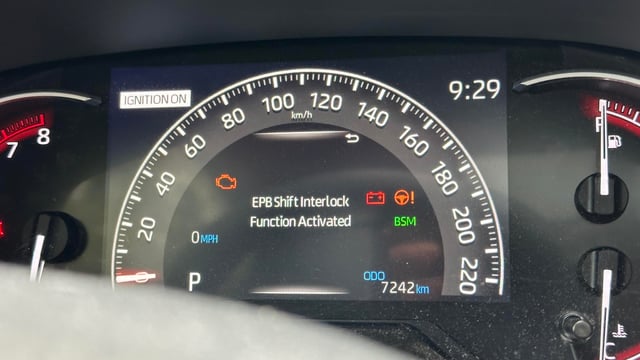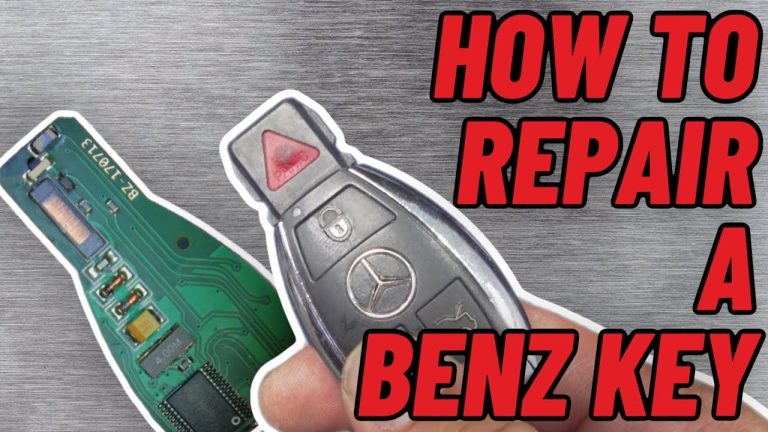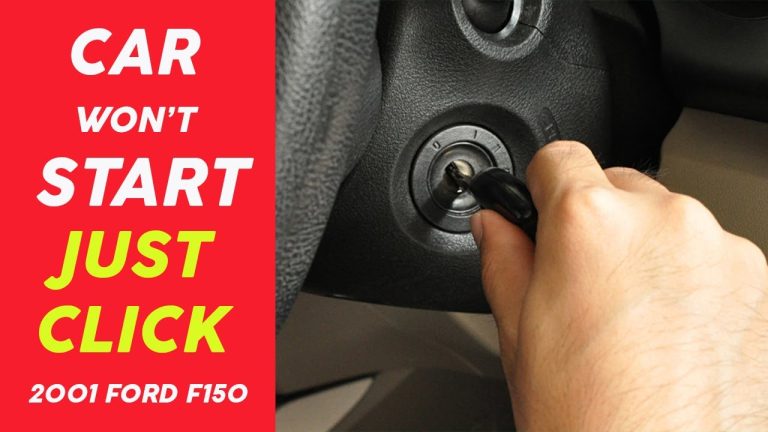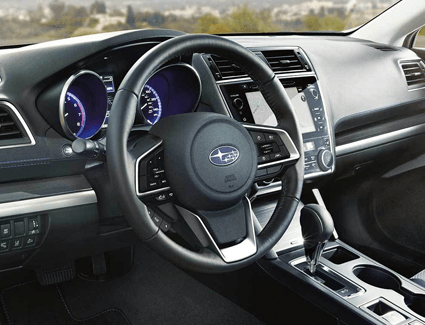How to Start Car in Cold Weather: Expert Tips
To start a car in cold weather, turn off all accessories, press the clutch (manual) or brake (automatic), and turn the key or push the start button. If it doesn’t start, wait 10 seconds before retrying. Use a block heater or jump starter if the battery is weak.
But what if you could transform that frustration into confidence? Imagine knowing exactly what to do so your car starts smoothly, even on the chilliest mornings. This guide will reveal the secrets to getting your vehicle up and running in cold weather, saving you time and stress.
Ready to conquer the cold? Keep reading to discover simple, effective tips that will make you the master of winter starts.
How to Start Car in Cold Weather
Pre-winter Preparations
Winter’s chill often challenges car performance. Preparing your car before winter hits can prevent cold-weather issues. Pre-winter preparations ensure your car remains reliable, even in freezing conditions. Let’s explore key steps to get your car ready for winter.
Read more: Nissan Dashboard Symbols And Meanings: Essential Guide
- Turn off headlights, radio, and heater before starting to reduce battery load.
- Press the brake or clutch fully and try starting; wait 10 seconds before retrying if it fails.
- Use a block heater or jump starter if the engine or battery is too cold.
Check Your Battery
Cold weather can weaken batteries. Check for corrosion on battery terminals. Clean them if needed. Test the battery’s voltage. Replace it if the power is low. New batteries perform better in cold climates.
Examine Tire Condition
Inspect tire tread and pressure. Cold air reduces tire pressure. Ensure tires have proper inflation. Consider switching to winter tires. Winter tires offer better grip on icy roads.
Inspect Antifreeze Levels
Antifreeze prevents engine freezing. Check the antifreeze level in your radiator. Top up if it’s low. Ensure the antifreeze concentration is correct. It should protect your engine in cold temperatures.
Check Oil Viscosity
Oil thickens in cold weather. Use oil with suitable viscosity for winter. Thinner oils flow better in cold engines. Check the owner’s manual for recommendations.
Test Heater And Defroster
Ensure the heater and defroster work properly. Warm air keeps you comfortable. Clear windows improve visibility. Test both systems before winter arrives.
Stock Emergency Supplies
Prepare an emergency kit. Include items like blankets, flashlights, and jumper cables. Add non-perishable snacks and water. These supplies can help during unexpected breakdowns.
Read more: Why My Nissan Altima Won’t Start But Has Power: Troubleshoot Guide
Battery Care
Starting a car in cold weather requires extra care for your battery. Ensure the battery terminals are clean and secure. Turn off all accessories before starting to prevent extra strain.
Starting your car in cold weather can be a real struggle. Often, the culprit is the car battery. Proper battery care becomes crucial in chilly temperatures. A well-maintained battery can be the difference between a smooth start and a frustrating morning. Let’s explore how you can keep your battery in top shape during the winter months.
Check Your Battery Health
Regularly checking your battery’s health is essential. Use a multimeter to measure the voltage. It should read around 12.6 volts when the engine is off. A lower reading might indicate that your battery needs attention. If you notice any issues, consult a professional mechanic.
Clean The Battery Terminals
Dirty terminals can hinder your battery’s performance. Use a mixture of baking soda and water to clean them. Scrub gently with an old toothbrush. Ensure you dry the terminals thoroughly before reconnecting. This simple task can improve your battery’s efficiency.
Keep The Battery Warm
Cold weather is harsh on batteries. Consider using a battery blanket to keep it warm. These are electric wraps that you plug in overnight. It’s a small investment that can save you time and stress on a frosty morning.
Limit Short Drives
Short drives prevent your battery from fully charging. Aim for longer trips to let your alternator do its job. If you mostly make short trips, consider using a battery charger. This keeps your battery charged and ready to go.
Inspect For Corrosion
Corrosion can appear as a white, ashy substance on your battery. It can lead to poor connections and weak performance. Inspect your battery regularly. Clean any corrosion you find immediately.
Test The Battery Regularly
Frequent testing can help you anticipate battery failure. Many auto shops offer free battery testing services. Make it a habit to test your battery before the cold season hits. This proactive approach can prevent inconvenient breakdowns. Have you ever been late to work because your car wouldn’t start? It’s a common experience, but it doesn’t have to be yours. Take these steps to ensure your battery is ready for whatever winter throws at you. What other winter car tips do you swear by? Share your experiences and insights in the comments.
Fuel And Fluids Check
Starting your car in cold weather can be a challenge. Checking fuel and fluids is crucial. These elements ensure your car runs smoothly in low temperatures. Cold weather affects car components. It can thicken fluids and reduce efficiency. Proper maintenance is key. Let’s explore essential checks for a hassle-free start.
Fuel Levels
Always keep your fuel tank at least half full. Cold weather can cause condensation in the tank. This leads to fuel line freeze-up. A fuller tank prevents this issue. It also ensures the fuel pump stays submerged. This helps it function efficiently.
Engine Oil
Engine oil thickens in cold weather. This makes starting difficult. Use low-viscosity oil for better performance. Check your owner’s manual for recommendations. Regular oil changes help maintain engine health. Cold starts demand more from your engine.
Coolant Levels
Coolant prevents your engine from freezing. Check its level and condition. A 50/50 mix of water and antifreeze is ideal. This ratio ensures protection against freezing. Replace old or dirty coolant. It loses effectiveness over time.
Brake Fluid
Brake fluid is vital for safety. Cold weather can affect its performance. Check fluid levels and top up if needed. Ensure there are no leaks. This keeps your brakes responsive and reliable.
Windshield Washer Fluid
Visibility is crucial in cold weather. Use winter-grade washer fluid. It prevents freezing on your windshield. Keep the reservoir full. Clear visibility ensures safe driving. Regular checks improve safety and convenience.
Transmission Fluid
Transmission fluid thickens in the cold. This affects gear shifting. Check the fluid level regularly. Ensure it’s at the recommended level. Consider using a winter-grade fluid. This improves performance in low temperatures.

Credit: www.captoyota.com
Using Engine Block Heaters
Car troubles in cold weather can be frustrating. One effective solution is using engine block heaters. These devices warm your car’s engine before you start it. This makes the start-up process smoother and quicker. Engine block heaters are especially useful in regions with harsh winters. They can help reduce engine wear and improve efficiency. Let’s explore how to use them effectively.
What Is An Engine Block Heater?
An engine block heater is a device that heats the engine block. It keeps the engine oil and coolant warm. This prevents the engine from getting too cold overnight. The heater plugs into a standard outlet. Some cars have them factory-installed. Others may require installation.
How To Install An Engine Block Heater
Installing an engine block heater can be simple. First, check your car’s manual. It may have specific instructions. If not, consult a professional. Some heaters fit into the engine’s freeze plug. Others attach magnetically to the oil pan. Ensure the heater is compatible with your car.
When To Use An Engine Block Heater
Use the engine block heater during cold weather. Especially in temperatures below 0°F (-18°C). Plug it in a few hours before starting your car. Many people use a timer. This ensures the heater turns on at the right time. This saves energy and ensures a warm engine.
Benefits Of Using Engine Block Heaters
Engine block heaters reduce engine wear. Cold starts are tough on engines. Heaters help the engine start smoothly. This can extend your engine’s life. Warm engines use less fuel. This increases fuel efficiency. You may also notice faster cabin heating. This adds comfort on chilly mornings.
Efficient Starting Techniques
Cold weather makes starting a car challenging. Use synthetic oil to reduce engine friction. Warm up the battery with a jump start cable.
Starting your car in cold weather can often feel like a daunting task, especially when you’re in a hurry. But with the right techniques, you can make the process smoother and more efficient. Understanding how to effectively start your car in cold conditions not only saves time but also prevents unnecessary stress on your vehicle’s engine. Let’s delve into some practical and actionable insights to help you get your car running smoothly, even on the chilliest of mornings.
Check Your Battery
Cold weather can drain your car battery faster than you might think. Before starting your car, make sure your battery is in good condition. If it’s been a few years since your last replacement, consider having it tested. A weak battery might not have enough power to crank the engine in freezing temperatures.
Use The Right Oil
The type of oil you use can significantly impact your car’s performance in cold weather. Thinner oil, such as 5W-30 or synthetic variants, flows more easily at low temperatures. This allows the engine to turn over more smoothly and reduces the strain on the starter.
Turn Off Accessories
Before you attempt to start your car, ensure all electrical accessories are turned off. This includes the radio, heater, and lights. These draw power from the battery, and turning them off will give the starter motor the full power it needs to start the engine.
Cycle The Ignition
If your car struggles to start, try cycling the ignition. Turn the key to the run position without starting the engine and hold it for a few seconds. This warms up the fuel pump and gets the fuel flowing. Repeat this process a couple of times before starting the engine.
Press The Clutch
If you’re driving a manual transmission, press the clutch while starting the car. This disengages the transmission and reduces the load on the starter motor. Even if you’re parked on a flat surface, pressing the clutch can make a noticeable difference.
Give It A Few Seconds
Once your car starts, avoid revving the engine immediately. Let it idle for a few seconds to allow the oil to circulate and the engine to warm up slightly. This simple step can prolong your engine’s life and improve performance. Have you ever considered how these small adjustments could save you from a morning of frustration? By incorporating these techniques, you’re not just starting your car efficiently; you’re also taking care of your vehicle in the long run.

Credit: www.cars.com
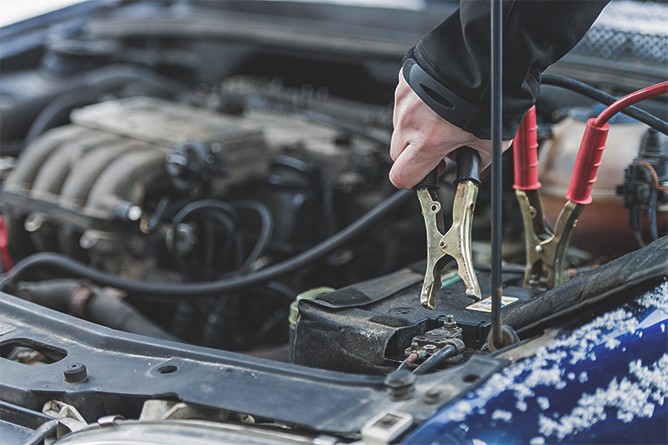
Credit: www.championautoparts.com
Frequently Asked Questions
Why Won’t My Car Start In Cold Weather?
Cold weather affects your car battery. It loses power in low temperatures. Engine oil thickens, making it hard to start.
What Can I Do If My Car Won’t Start?
Check the battery. Ensure connections are tight. Try jump-starting your car. Use a battery charger if needed.
How Does A Block Heater Help My Car?
A block heater warms your engine. It makes starting easier in cold weather. Improves engine efficiency too.
Conclusion
Starting your car in cold weather can be tricky. With simple steps, you can ease the process. Check the battery and keep it charged. Use the right oil for winter. Warm up the engine before driving. These tips make your winter mornings smoother.
Regular maintenance also helps. Cold weather should not stop you. Follow these steps to enjoy your winter drives. Be prepared and stay safe on icy roads. A little care goes a long way. Keep your car ready for winter adventures.
Stay warm and drive confidently.



